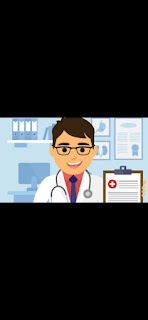The Benefits and Uses of Acupressure
Acupressure is often called acupuncture without the needles. Instead of needles, acupressure involves the application of manual pressure (usually with the fingertips) to specific points on the body.According the principles of traditional Chinese medicine, invisible pathways of energy called meridians flow within the body. At least 14 meridians are thought to connect our organs with other parts of the body. Acupuncture and acupressure points lie along those meridians.
If the flow of energy (also called "chi" or "qi") is blocked at any point on a meridian, it's thought to cause various symptoms and health conditions anywhere along the meridian.That's why a practitioner may apply pressure to an acupressure point on the foot to relieve a headache.
Uses
Most people try acupressure for the first time to manage symptoms of a condition, such as:
Cancer-related fatigue and other forms of fatigue
Insomnia
Headache
Menstrual cramps
Motion sickness
Muscle tension and pain
Nausea or vomiting after surgery or chemotherapy
Nausea and vomiting during pregnancy and morning sickness
Stress management
Benefits
There's currently a lack of studies exploring the effectiveness of acupressure. Still, some evidence suggests wrist acupressure may help relieve pain after a sports injury.
In a 2017 study published in the Clinical Journal of Sports Medicine, for instance, researchers examined the effects of three minutes of acupressure, three minutes of sham acupressure, or no acupressure in athletes who had sustained a sports injury on the same day.
The study concluded that acupressure was effective in reducing pain intensity compared to sham acupressure or no acupressure. There was no change in anxiety.
Side Effects and Safety
Acupressure should never be painful. If you experience any pain, tell your therapist immediately. After an acupressure session, some people may feel soreness or bruising at acupressure points. You may also feel temporarily lightheaded.
Pressure should be gentle over fragile or sensitive areas, such as the face.
If you're pregnant, talk to your care provider before trying acupressure. Acupressure typically isn't done on the abdomen or certain points on the leg or low back during pregnancy.
Acupressure shouldn't be done over open wounds, bruises, varicose veins, or any area that is bruised or swollen.



Comments
Post a Comment